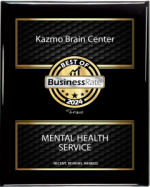It’s normal to feel nervous in some social situations. For example, going on a date or giving a presentation may cause that feeling of butterflies in your stomach. But in social anxiety disorder, also called social phobia, everyday interactions cause significant anxiety, fear, self-consciousness, and embarrassment because you fear being scrutinized or judged by others.
What Is Social Anxiety Disorder?
Social Anxiety Disorder (SAD), also known as Social Phobia, is a mental health disorder whereby the affected person has an intense fear and extreme anxiety related to being in social situations and interacting with other people or groups. The fear and anxiety are so severe that the person avoids situations where they must do things like speak in public or do any activity where they are being watched, judged, or evaluated by one or more people. Social anxiety is different from shyness. Shyness is usually short-term and doesn’t disrupt one’s life. Social anxiety is persistent and debilitating. It can affect one’s ability to:
- Work
- Attend school·
- Develop close relationships with people outside of their family.
Symptoms of this disorder may start around the age of 13. According to the Anxiety and Depression Association of America (ADAA), approximately 15 million American adults have a social anxiety disorder.
Symptoms of Social Anxiety Disorder:
The Symptoms are divided into physical, psychological, and Avoiding:
Physical Symptoms:
Social interaction may cause the following physical symptoms:
- Blushing
- Nausea
- Excessive sweating
- Trembling or shaking
- Difficulty speaking
- Dizziness or lightheadedness·
- Rapid heart rate
Psychological Symptoms:
Psychological symptoms may include:
- Worrying intensely about social situations
- Worrying for days or weeks before an event
- Avoiding social situations or trying to blend into the background if you must attend
- Worrying about embarrassing yourself in a social situation
- Worrying that other people will notice you are stressed or nervous
- Needing alcohol to face a social situation·
- Missing school or work because of anxiety
Avoiding Common Social Situations:
Common, everyday experiences that may be hard to endure when you have social anxiety disorder include, for example:
- Interacting with unfamiliar people or strangers
- Attending parties or social gatherings
- Going to work or school
- Starting conversion
- Making eye contact
- Dating
- Entering a room in which people are already seated
- Returning items to a store
- Eating in front of others
- Using a public restroom
Symptoms of social anxiety may not occur in all situations. You can have limited or selective anxiety. For example, symptoms may only occur when you’re eating in front of people or talking to strangers. Symptoms can occur in all social settings if you have an extreme case.
Diagnosing Social Anxiety Disorder
There is no medical test to check for social anxiety disorder. Your healthcare provider will diagnose social phobia from a description of your symptoms. They can also diagnose social phobia after examining certain behavioral patterns. Kazmo Brain Center offers a screening tool that measures the degree of anxiety, scores indicate the severity of anxiety among people who had already been diagnosed. If you are within the age of 6-17 take the anxiety test here. If you are over the age of 18, this test is suitable for you.
What Causes Social Anxiety Disorder?
The exact cause of social phobia is unknown. However, current research supports the idea that it is caused by a combination of environmental factors and genetics. Negative experiences also may contribute to this disorder, including:
- Bullying
- Family conflict
- Sexual abuse
- Physical abnormalities such as a serotonin imbalance may contribute to this condition. Serotonin is a chemical in the brain that helps regulate mood. An overactive amygdala (a structure in the brain that controls fear response and feelings or thoughts of anxiety) may also cause these disorders.
Anxiety disorders can run in families. However, researchers aren’t sure if they’re actually linked to genetic factors. For example, a child might develop an anxiety disorder by learning the behavior of one of their parents who has an anxiety disorder. Children can also develop anxiety disorders as a result of being raised in controlling or overprotective environments.
Treatment for Social Anxiety Disorder.
Since avoidance is a central feature of SAD, and the symptom that precisely maintains and worsens the severity of the disorder, avoidance is typically targeted in treatment. Coping with SAD involves gradually increasing exposure to people and social situations. However, in order to prevent the person from feeling excessively overwhelmed and fearful, which would discourage them from attempting to practice coping skills in the first place, gradual exposure is key.
When the person sees him/herself in social situations, even if they are only present and not interacting with others, their confidence and comfort begin to develop. Then, the person can begin to introduce themselves to small challenges, such as greeting a barista at a coffee shop or saying ‘good morning’ to a stranger. This further helps the person to realize that social interactions can be non-threatening. At the same time, the person should also consider situations where social interactions may not go well. For example, their greeting to another person could be ignored or not reciprocated. The person with SAD can consider different ways they can interpret this rather than seeing it as humiliating or as a form of rejection. They can instead consider that maybe that person did not hear them because they are distracted with stressors on their mind.
Several types of treatment are available for social anxiety disorder. Treatment results differ from person to person. Some people only need one type of treatment. However, others may require more than one.
Social anxiety disorder treatment options may include:
Cognitive-behavioral therapy
This therapy helps you learn how to control anxiety through relaxation and breathing, and how to replace negative thoughts with positive ones.
Group therapy
This therapy helps you learn social skills and techniques to interact with people in social settings. Participating in group therapy with others who have the same fears may make you feel less alone. It will give you a chance to practice your new skills through role-playing.
Remember…
Social phobia doesn’t have to control your life. Although it may take weeks or months, psychotherapy and/or medication can help you begin to feel calmer and more confident in social situations.
Resources:
- ADAA.com
- healthline.com
Kazmo Brain Center is a counseling center in Frisco, Texas specializing in mental health counseling and will work with you toward a happier and more satisfying position. If you or your loved ones are facing Social Anxiety Disorder and you need help, Request an appointment at Kazmo Brain Center and we are here to help.







